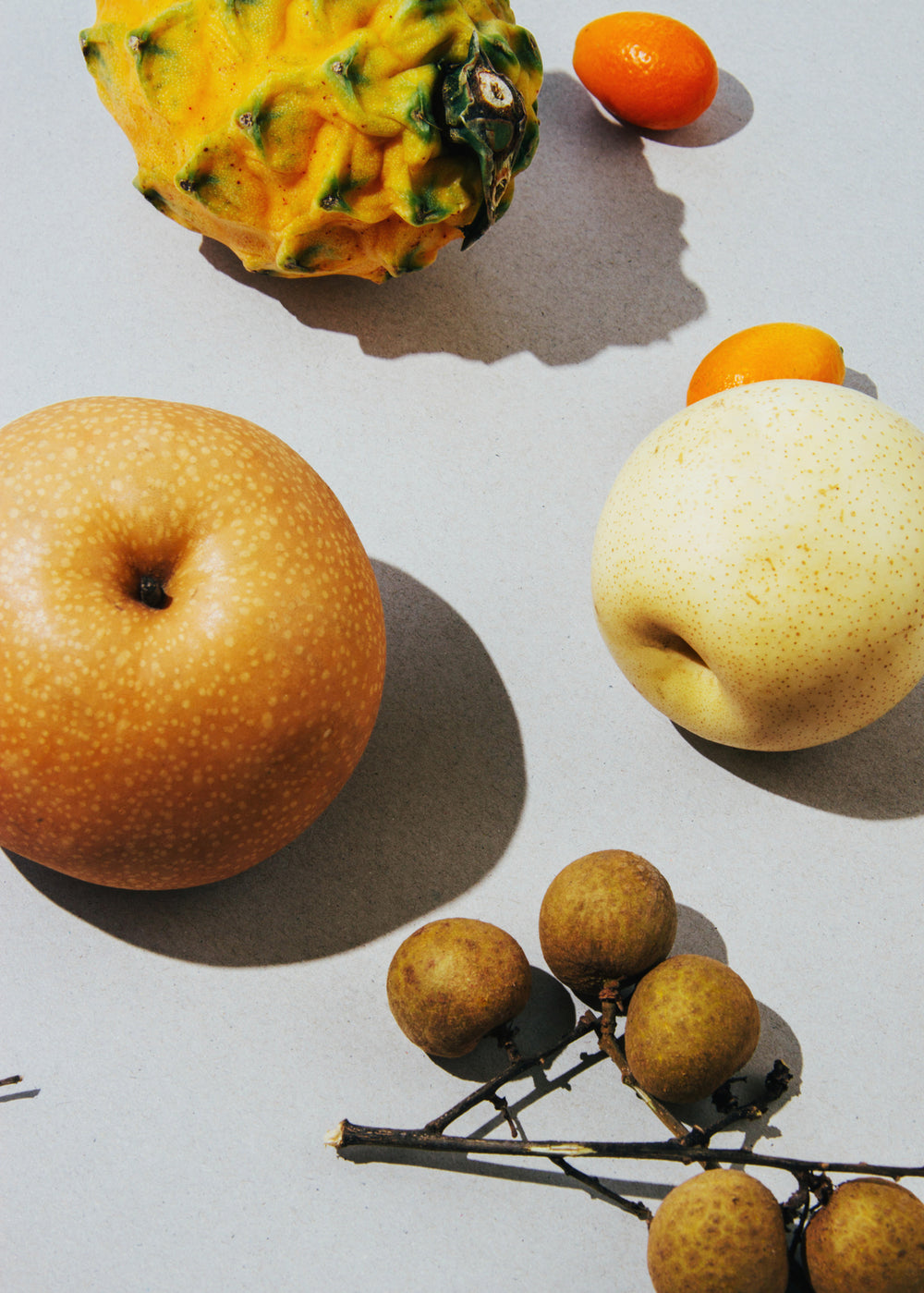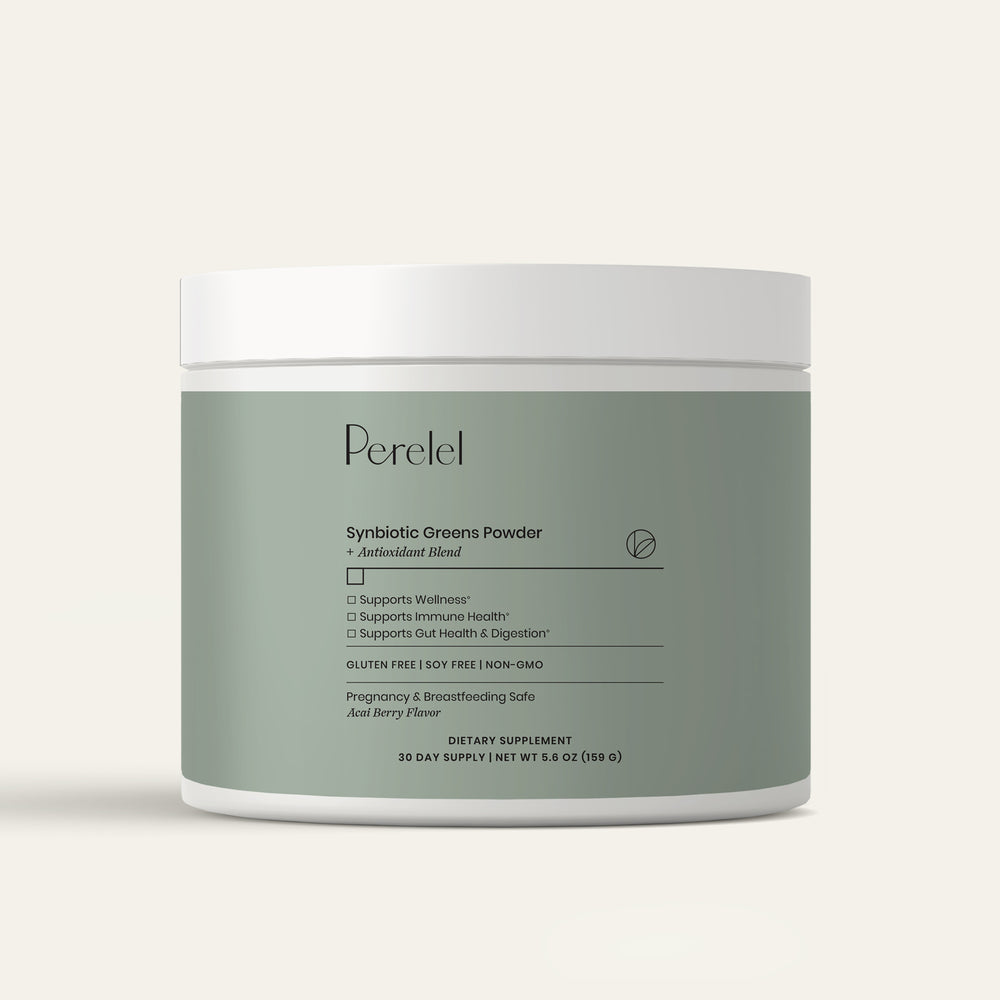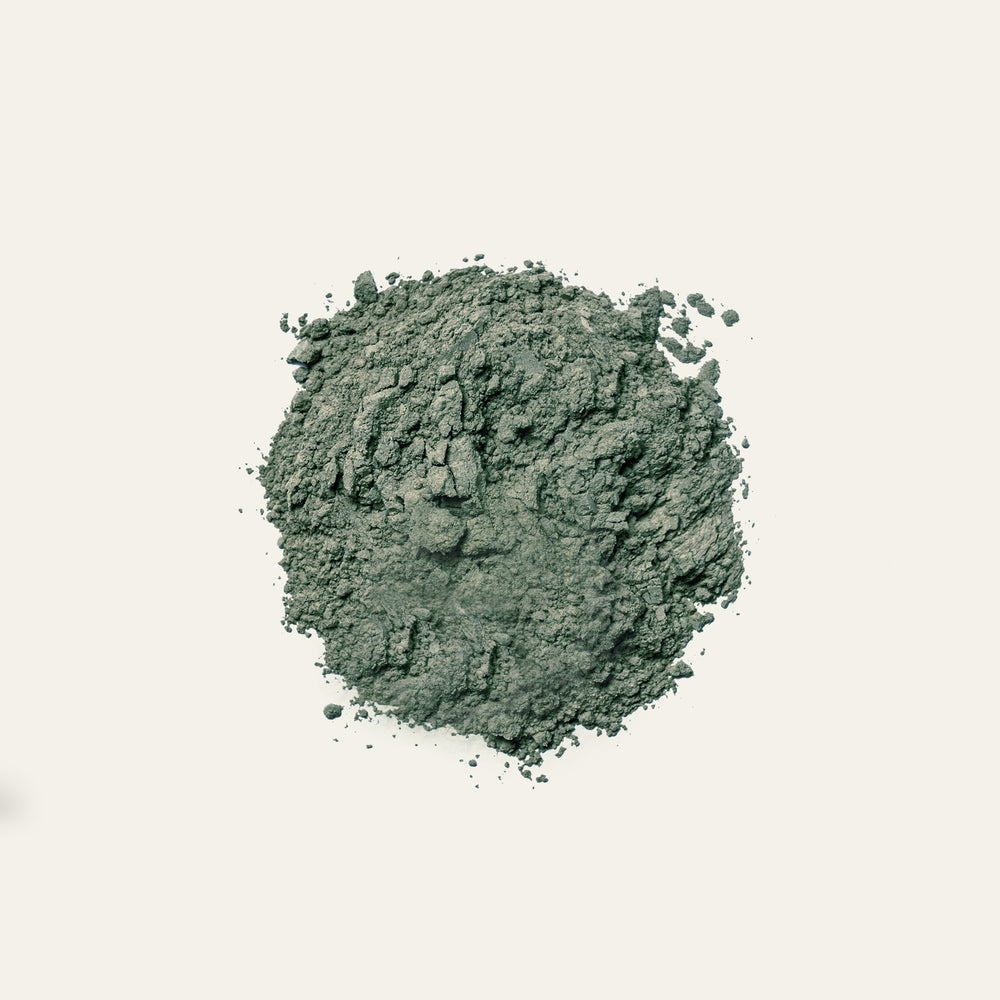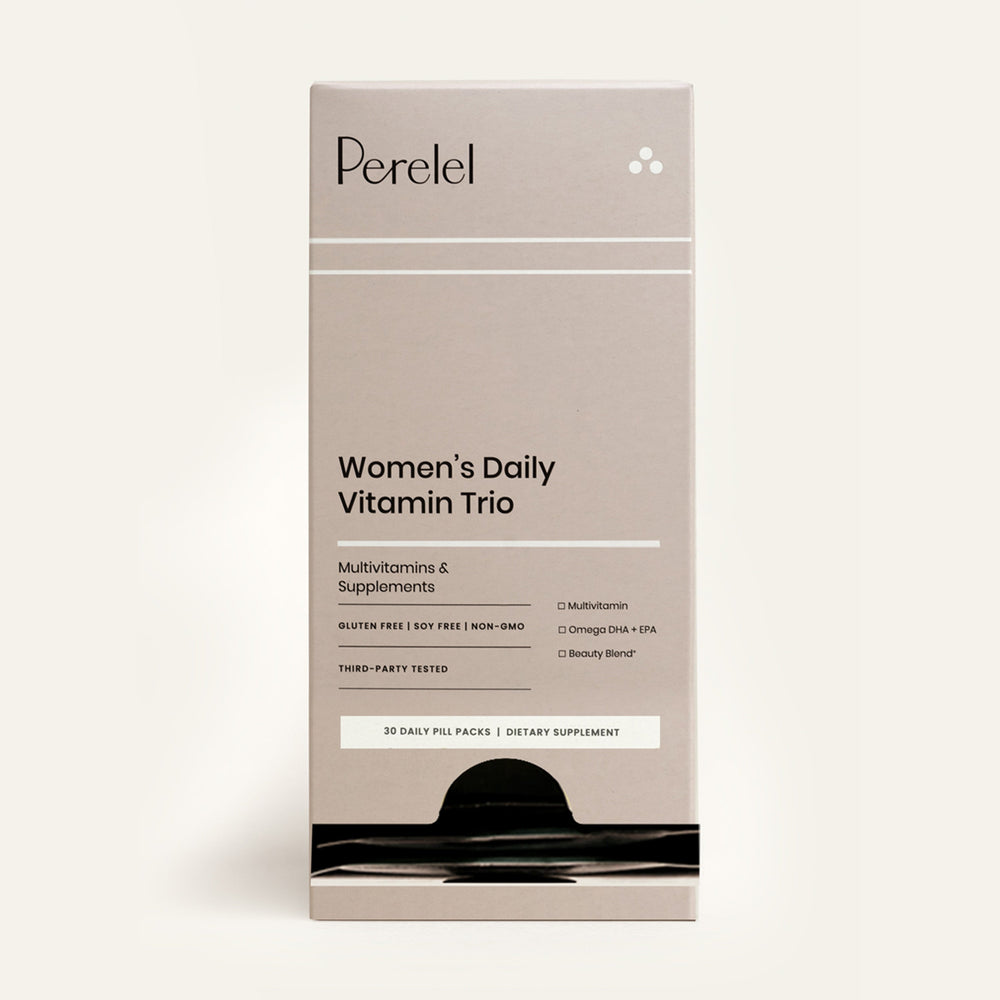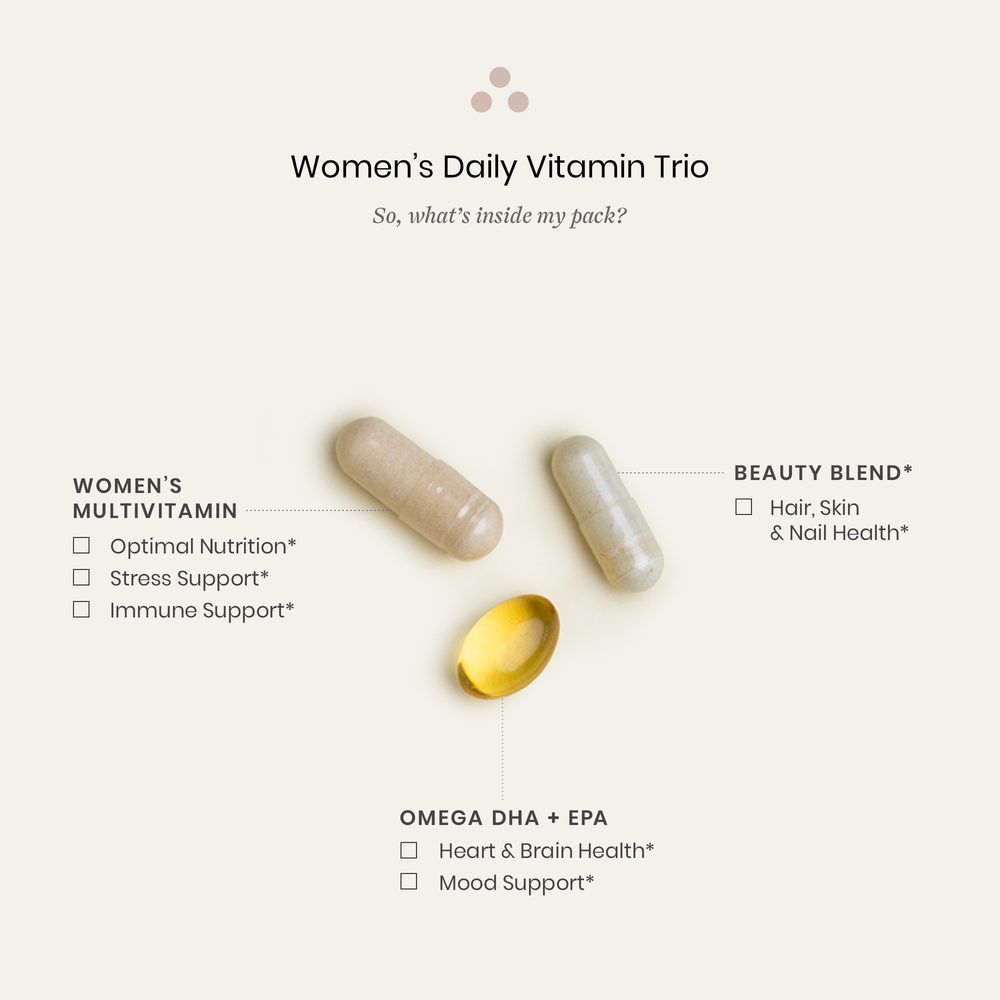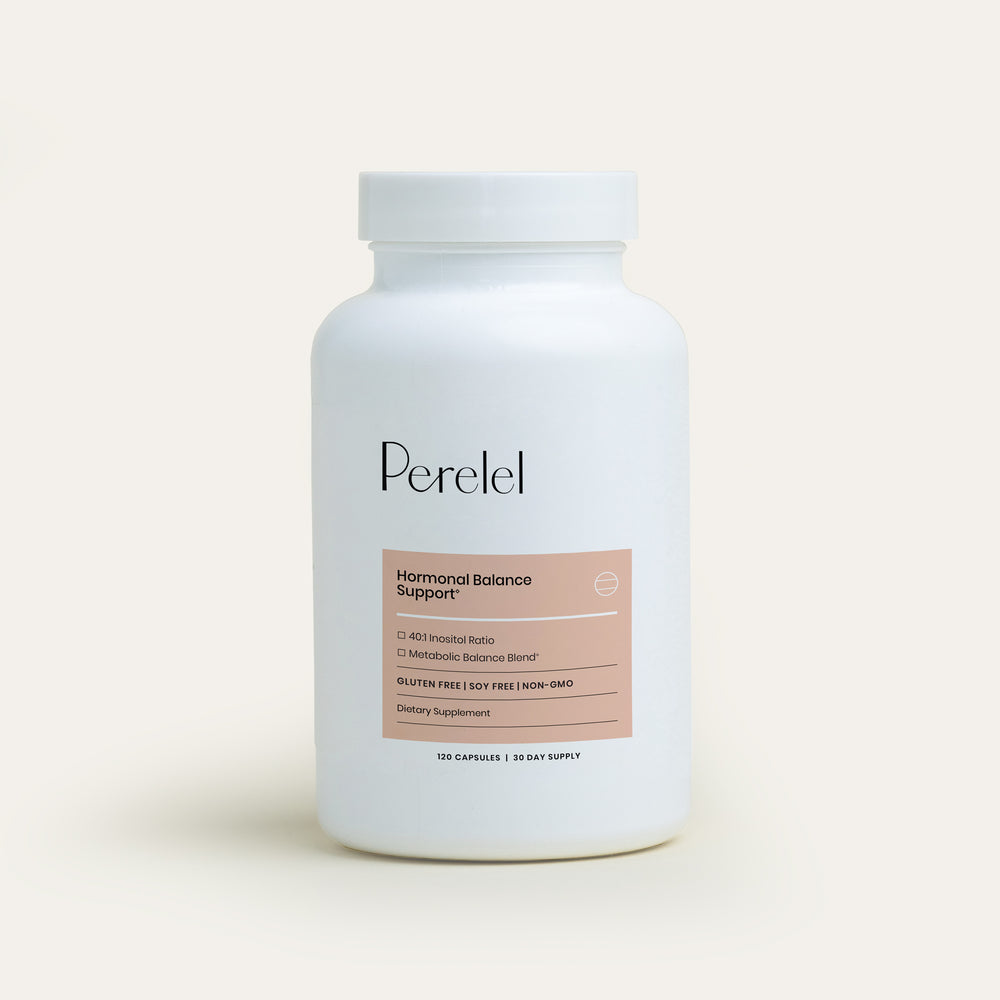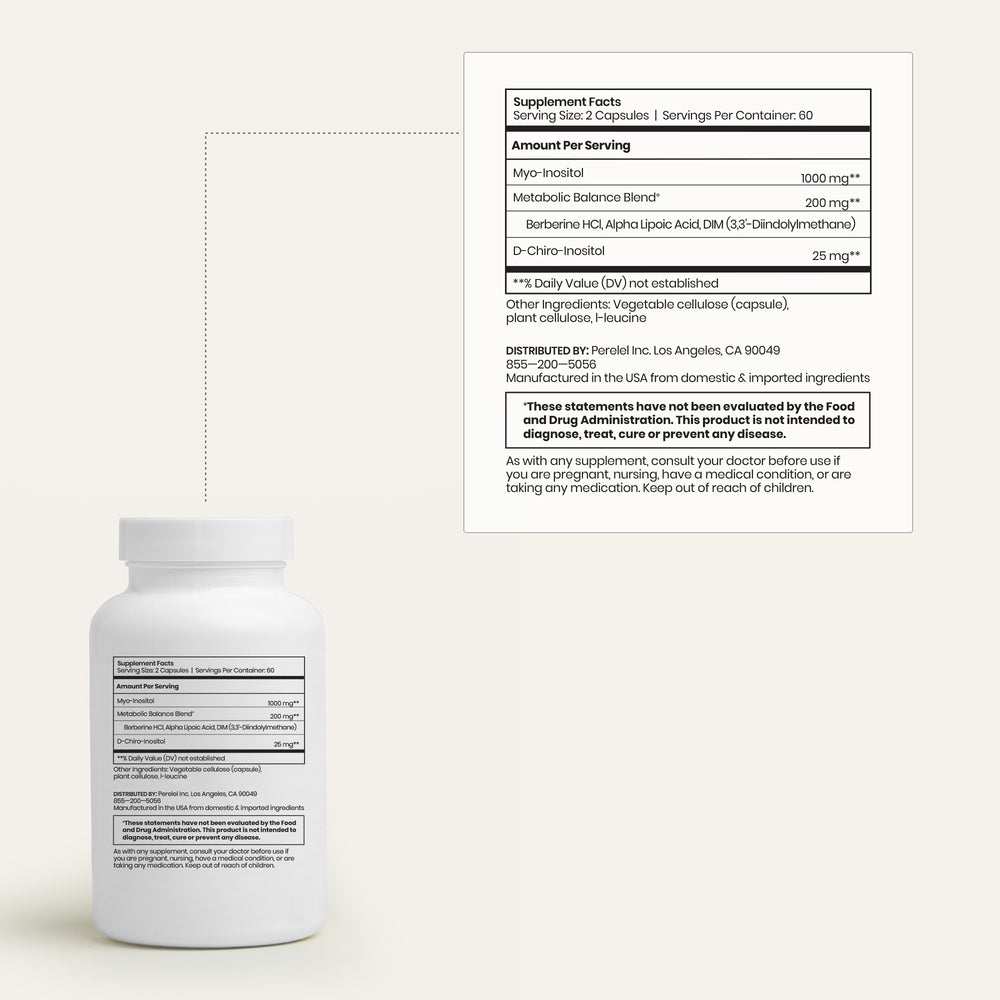Keeping your reproductive health balanced is as vital as any other aspect of your wellness routine—and that’s true whether you’re trying to conceive, navigating a hormonal condition like PCOS, or if you’re simply looking to be in better tune with your menstrual cycle.
After all, everything in our body is connected: Our reproductive hormones are a vital part of the broader endocrine system, which encompasses our glands throughout the body, the hormones made by these glands, and the receptors in various organs and tissues that respond to the hormones. When one part of the hormone system is out of whack, it is not uncommon to see imbalances elsewhere—like your mood, your skin, or through really heightened PMS symptoms, for example.1
The good news? While understanding the intricacies of our hormones can feel confusing, maintaining our reproductive wellness usually doesn’t require radical action. One of the simplest ways to keep your cycle and hormones in harmony is to carefully consider how you’re fueling your body.
To guide us through some tips on how to eat to support our reproductive health, we checked in with Stephanie Lauri, RD, CLEC, Registered Dietitian and Certified Lactation Educator. Below, she shares some of her go-to foods for hormonal balance—and goes deeper on the scientific link between our diet and our hormone levels.
First things first: How are our hormones and our diet related?
To put it really simply: “The reproductive and endocrine systems are extremely sensitive to influences from the external environment,” Lauri explains.
Because our hormones are our body’s chemical messengers, it’s basically their job to react to different triggers to try and find equilibrium. Those catalysts can include everything from “business-as-usual” changes (our menstrual cycle) to life stage shifts (pregnancy and menopause) to external stressors like poor sleep, dietary imbalances, and…well, stress.
When it comes to diet, supporting hormonal health comes down to a multi-pronged approach—that is, figuring out which dietary stressors to eliminate, as well as incorporating foods that have been shown to support reproductive health.
What aspects of our diets might be causing hormonal imbalance?
To begin with, “minimize practices like smoking, alcohol and excessive caffeine (under 500 mg per day, or three to five cups of brewed coffee),” says Lauri. These are all things that can trigger the production of cortisol, our stress hormone—and when cortisol levels are chronically high, it can interrupt the production of other essential hormones that drive our reproductive health. (It’s why those who are under a lot of stress might experience irregularity of their period.)
Next, “it is important to acknowledge and address any nutrient deficiencies and intervene through diet changes and possible supplementation,” Lauri suggests. “Some common deficiencies among young women include iron, iodine, folate, vitamin B12 (especially for those who follow a vegetarian or vegan diet), calcium (specifically for those who avoid dairy products, due to the increased requirement during adolescent growth), and vitamin D (depending on sun exposure and skin pigmentation).”
What are the best foods you can add to your diet to support reproductive health and hormonal balance?
Once you’ve addressed any potential dietary stressors and gaps, “focusing on a well-balanced, nutrient-dense, healthy diet including animal and plant proteins, colorful fruits and vegetables, and nuts and seeds, is a great place to start,” says Lauri. Think: “meat, poultry, and low mercury fish (like salmon, cod, freshwater trout, whitefish, shrimp) for protein, bioavailable iron and vitamin B12, and other essential nutrients like zinc, selenium, B-vitamins and iodine).”
“Iron deficiency anemia is the most common form of anemia worldwide in adolescent and reproductive women,” Lauri advises. You’ll also want to focus on incorporating “dark leafy green vegetables to provide vitamin A, folate, antioxidants, fiber and colorful fruits and vegetables to provide antioxidants.”
Add:
- Meat, poultry, and eggs: High-protein foods like chicken breast and eggs help keep blood sugar levels in check—essential for balanced hormones. (Hormones like estrogen, progesterone, testosterone, and cortisol all have a relationship with blood sugar, so keeping yourself satieted is key.)
- Low-mercury fish: In addition to providing more of that blood sugar-stabilizing protein, seafood like salmon, cod, and shrimp also offer an array of healthy vitamins and nutrients that help keep the body in balance.
- Nuts, seeds, and legumes: Think beans, chia seeds, and nuts like almonds and walnuts—incorporating a mix of any and all of these helps target a spectrum of phytonutrients, healthy fats, and fiber. Pro tip: During PMS and your period, get your fill of high-iron legumes like lentils—the iron content helps replenish nutrient stores from blood loss, while fiber has actually been shown to counteract period cramps (in addition to supporting gut health and digestion). Meanwhile, flaxseeds are linked with estrogen metabolism, thanks to a high content of plant chemicals called lignans. Some small studies suggest that flax seed may support cycle regularity.
- Colorful fruits and vegetables: Say it with us: Eat the rainbow. It’s a good rule in general when it comes to healthy produce, as it ensures that you’re hitting a spectrum of vitamins and antioxidants. High-fiber vegetables like broccoli, kale, brussels sprouts, chard and other cruciferous vegetables support healthy blood sugar levels and are chock full of nutrients—plus these kinds of veggies are particularly rich in diindolylmethane, or DIM, a compound that is linked with supporting hormonal balance in those with PCOS. One quick note: Make sure you cook cruciferous vegetables, as they can be tough to digest when eaten raw.
- Dark leafy greens: In addition to providing antioxidants and fiber, leafy greens like spinach, kale, and chard are packed with vitamin A, which supports thyroid health, and folate, which promotes regular ovulation.
- Healthy fats: Consider cooking with nutrient-rich oils like extra virgin olive oil, coconut oil, flaxseed oil, or avocado oil. In moderation, these omega-6 and omega-3 fatty acids support hormone production and help fight against inflammation.
- Nutrient-enriched grains: Looking for a reason to incorporate oatmeal, whole grain bread, and quinoa into your diet? One 2019 study found that when female subjects ate diets enriched with whole grains, their PMS pain scores were significantly reduced.
What other foods should we avoid?
On the no-no list: “highly processed oils like corn, soybean, canola, safflower, sunflower, and grapeseed oils, which lead to body system inflammation,” says Lauri. “Swap these oils with extra virgin olive oil, coconut oil, or avocado oil.”
Also look out for “refined grains—meaning products made with white flour—that do not have nutrients added to it,” she adds. “Refined grains do not contain fiber and cause a more rapid spike in blood sugar leading to more cravings and energy crashes. Instead, look for products that are ‘enriched’ with added nutrients like folic acid, iron, and B-vitamins,” Also, ditch the “sugary drinks like regular sodas, energy drinks, and juices, as they spike blood sugar and provide no micronutrients.”
What type of diet is best for reproductive health?
Lauri recommends the oft-touted Mediterranean diet pattern: "It's low in saturated fat, high in complex carbohydrates and high in fiber," she explains. "Following a Mediterranean diet also increases the likelihood of achieving adequate intakes of zinc, B vitamins, vitamin A, vitamin E, magnesium, and vitamin C. It uses olive oil as an added fat instead of vegetable oil like the typical Western diet."
And to further support your reproductive and hormonal health, it’s not a bad idea to supplement with a daily multivitamin and a probiotic.
How many calories should we be eating to maintain reproductive health?
As with most aspects of our health, it's all a balancing act: " Exercising too much, eating too little, and being under too much stress can lead to metabolic and hormonal problems," says Lauri. "This can lead to the condition known as functional hypothalamic amenorrhea (HA), which can cause you to lose your menstrual cycle for several months."
If you're experiencing irregular periods and have experienced a change in weight, diet, or health routine, it's best to consult with your physician to determine the best path forward for you.
Have any other questions for our experts? Tell us on social or by dropping us an email.
Shop the Article:
1 EPA. What is the Endocrine System?
2 M.A. Hanson et al. / International Journal of Gynecology and Obstetrics 131 S4 (2015) S213–S253
3 Sharma et al. Reproductive Biology and Endocrinology 2013, 11:66
4 Wynn A. Effects of Nutrition on Reproductive Capability. Nutrition and Health. 1983;1(3-4):165-178
5 Human Reproduction Update, Vol.12, No.3 pp. 193–207, 2006
6 Montero-López E, Santos-Ruiz A, García-Ríos MC, Rodríguez-Blázquez M, Rogers HL, Peralta-Ramírez MI. The relationship between the menstrual cycle and cortisol secretion: Daily and stress-invoked cortisol patterns. Int J Psychophysiol. 2018 Sep;131:67-72. doi: 10.1016/j.ijpsycho.2018.03.021. Epub 2018 Mar 29. PMID: 29605399.

